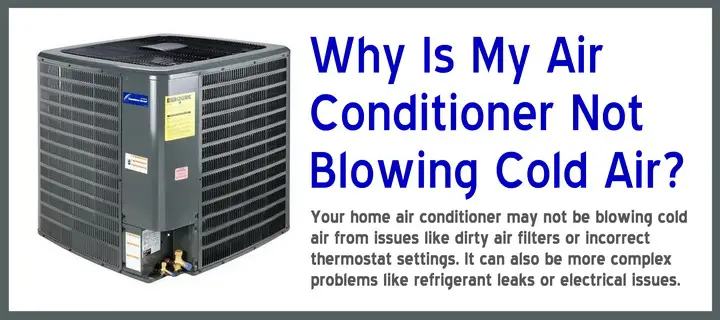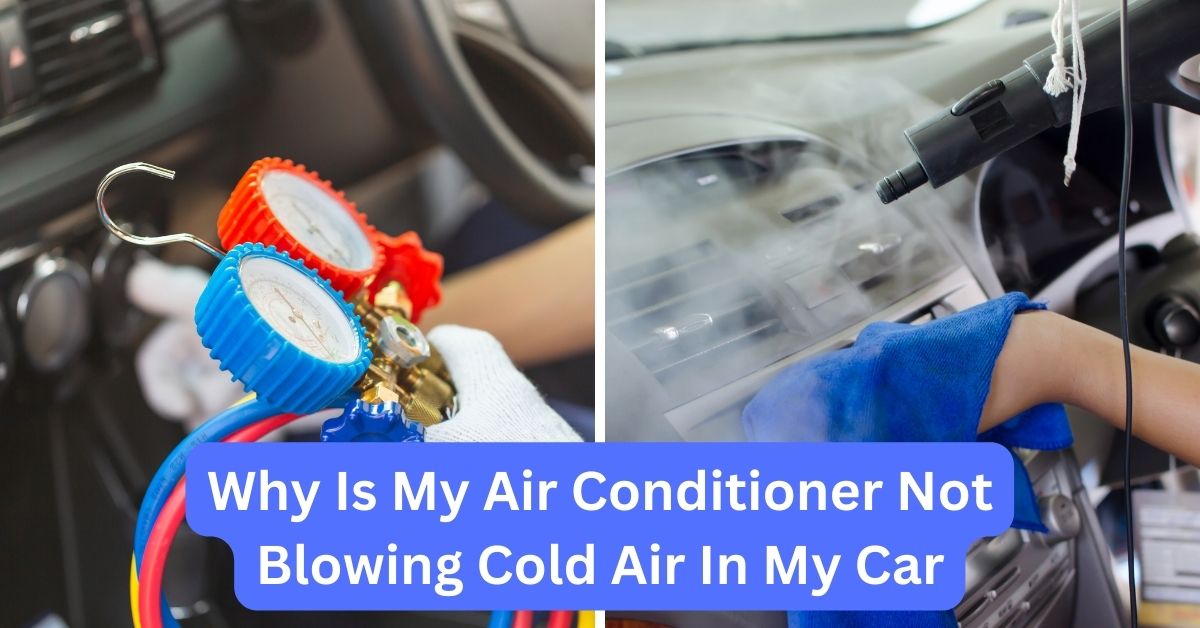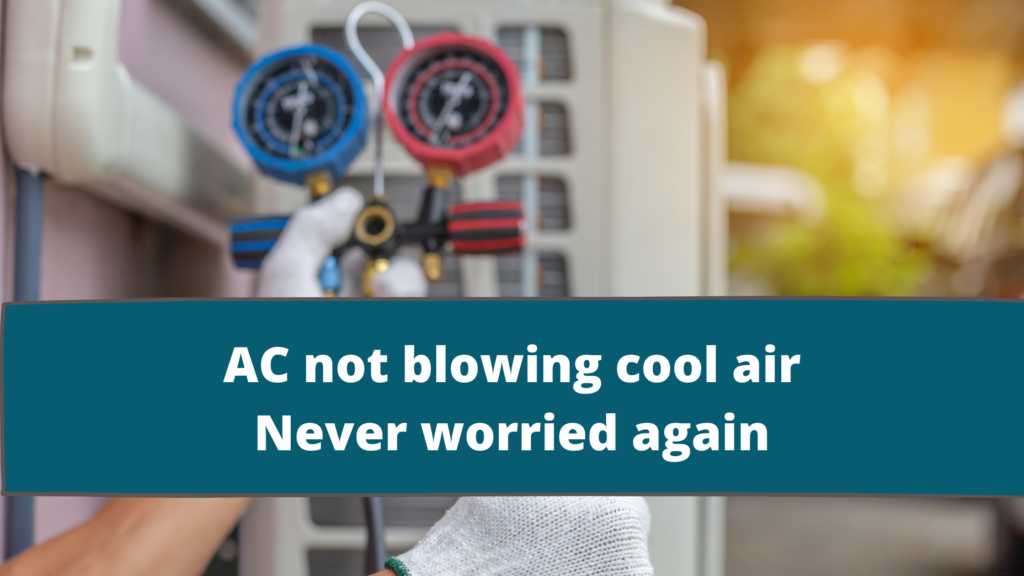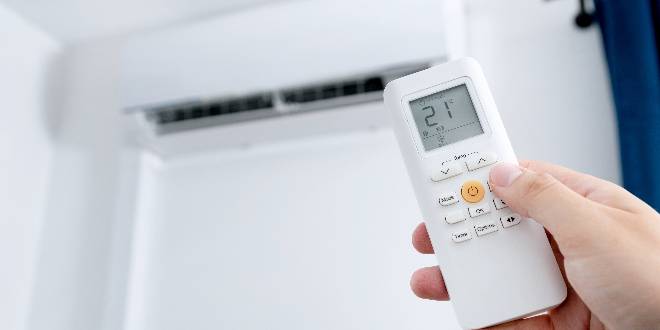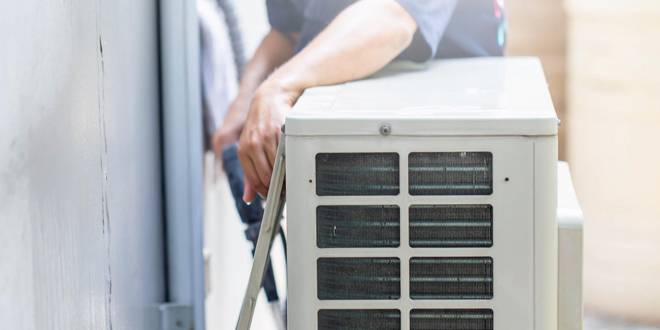Air Conditioning Blowing But Not Cooling

Air Conditioning Blowing But Not Cooling: A Comprehensive Guide
Few things are more frustrating than an air conditioner that runs and blows air, but fails to deliver the promised cool relief on a hot day. This guide explores the common causes of this problem, offering solutions for homeowners, HVAC technicians, and facility managers alike. We'll delve into system diagnostics, potential repairs, and preventative measures to ensure your AC keeps you comfortable and your energy bills in check.
Common Causes and Troubleshooting
1. Refrigerant Leaks: The Lifeblood of Cooling
The most frequent culprit behind an AC's cooling failure is a refrigerant leak. Refrigerant, often called Freon (though modern systems use alternative refrigerants like R-410A), is the substance that absorbs heat from your indoor air and releases it outside. When refrigerant levels are low, the AC's ability to cool diminishes significantly.
Symptoms of a Refrigerant Leak:
- Weak or no cooling
- Ice forming on the evaporator coil (indoor unit) or refrigerant lines
- Hissing or bubbling sounds near the AC unit
- Higher than usual energy bills
Troubleshooting:
A homeowner can visually inspect the refrigerant lines for signs of oil residue, which often indicates a leak point. However, locating and repairing refrigerant leaks requires specialized equipment and expertise. This is a job for a qualified HVAC technician. They will use leak detection tools, such as electronic leak detectors or UV dye, to pinpoint the source of the leak. After repairing the leak, they will recharge the system with the correct amount of refrigerant, ensuring optimal performance.
Cost Considerations: Refrigerant leak repair costs vary depending on the leak's location and severity. A simple repair might cost a few hundred dollars, while replacing a major component like the evaporator coil can be significantly more expensive.
2. Dirty Air Filter: An Overlooked Obstruction
A clogged air filter restricts airflow, forcing your AC unit to work harder and reducing its cooling capacity. A dirty filter can also lead to the evaporator coil freezing over.
Symptoms of a Dirty Air Filter:
- Weak airflow from vents
- AC running constantly
- Frozen evaporator coil
- Increased energy bills
Troubleshooting:
This is the easiest problem to fix! Regularly check your air filter (typically every 1-3 months) and replace it when it's dirty. Use the correct filter size and MERV (Minimum Efficiency Reporting Value) rating recommended by your AC manufacturer. Higher MERV ratings filter out smaller particles but can also restrict airflow if too high for your system.
Cost Considerations: Air filters are inexpensive, typically costing between $5 and $20, depending on the type and MERV rating.
3. Condenser Coil Issues: Heat Rejection Problems
The condenser coil, located in the outdoor unit, releases the heat absorbed from your indoor air. If the condenser coil is dirty or blocked, it can't effectively dissipate heat, leading to reduced cooling performance.
Symptoms of Condenser Coil Issues:
- Weak or no cooling
- Outdoor unit running constantly
- Overheating of the outdoor unit
Troubleshooting:
Visually inspect the condenser coil for debris like leaves, grass clippings, and dirt. Use a garden hose (with a gentle spray nozzle) to clean the coil from the inside out. Be careful not to bend the delicate fins. For heavily soiled coils, consider using a coil cleaner specifically designed for HVAC systems.
Professional Cleaning: In some cases, professional coil cleaning is necessary to remove stubborn dirt and grime. This involves using specialized cleaning solutions and equipment to thoroughly clean the coil without damaging it.
Cost Considerations: DIY condenser coil cleaning is free (excluding the cost of a hose and nozzle). Professional coil cleaning typically costs between $100 and $300.
4. Ductwork Problems: Leaks and Obstructions
Leaky or poorly insulated ductwork can waste a significant amount of cooled air before it even reaches your living space. Obstructions in the ductwork, such as collapsed sections or rodent nests, can also restrict airflow.
Symptoms of Ductwork Problems:
- Uneven cooling throughout the house
- Higher than usual energy bills
- Dusty air
- Noticeable drafts
Troubleshooting:
Visually inspect accessible ductwork for obvious leaks or damage. Seal any visible leaks with duct tape or mastic sealant. For inaccessible ductwork, consider hiring a professional to perform a ductwork inspection using a duct camera. Duct sealing is a common practice to improve energy efficiency.
Professional Duct Sealing: Professional duct sealing involves sealing all leaks in the ductwork using specialized equipment and materials. This can significantly improve the efficiency of your AC system and reduce energy bills.
Cost Considerations: Duct tape is inexpensive. Professional duct sealing costs vary depending on the size and complexity of the ductwork system, but can range from $500 to $2,000.
5. Compressor Failure: The Heart of the System
The compressor is the heart of the AC system, responsible for circulating refrigerant. If the compressor fails, the AC will not cool effectively.
Symptoms of Compressor Failure:
- No cooling
- Loud or unusual noises from the outdoor unit
- The compressor not turning on
Troubleshooting:
Compressor problems are complex and require specialized diagnostic equipment. This is definitely a job for a qualified HVAC technician. They will use multimeters and other tools to test the compressor's electrical components and determine the extent of the damage.
Cost Considerations: Compressor replacement is a major repair that can be expensive, often costing between $1,500 and $4,000, depending on the unit and labor costs. In some cases, it may be more cost-effective to replace the entire outdoor unit.
Preventative Maintenance: Keeping Your AC Running Smoothly
Regular preventative maintenance can help prevent many of the problems discussed above and extend the lifespan of your AC system. Here are some key maintenance tasks:
- Change Air Filters Regularly: As discussed earlier, this is crucial for maintaining airflow and preventing evaporator coil freeze-up.
- Clean Condenser Coils: Keep the outdoor unit free of debris and clean the condenser coils annually.
- Schedule Professional AC Tune-Ups: A professional tune-up typically includes inspecting the system for leaks, checking refrigerant levels, cleaning components, and testing electrical connections.
Efficiency Ratings and System Lifespan
When considering replacing an aging AC system, understanding efficiency ratings is essential. SEER (Seasonal Energy Efficiency Ratio) measures the cooling efficiency of an AC unit. A higher SEER rating indicates greater efficiency and lower energy bills. Modern AC units typically have SEER ratings ranging from 13 to 25.
System Lifespan: The average lifespan of an AC system is 10-15 years. Regular maintenance can help extend its lifespan, but eventually, replacement will be necessary.
Cost Comparison: When comparing AC systems, consider both the initial cost and the long-term energy savings. Higher-efficiency models often have a higher upfront cost but can save you significant money on energy bills over their lifespan.
Understanding HVAC System Types:
- Split Systems: The most common type, with an indoor unit (evaporator coil and blower) and an outdoor unit (condenser and compressor).
- Package Units: All components are housed in a single outdoor unit.
- Ductless Mini-Split Systems: Ideal for homes without ductwork, these systems consist of an outdoor unit connected to multiple indoor units.
- Geothermal Heat Pumps: Utilize the earth's constant temperature for heating and cooling, offering exceptional efficiency.
Conclusion
An air conditioner that blows air but doesn't cool can be caused by a variety of factors, ranging from simple issues like a dirty air filter to more complex problems like refrigerant leaks or compressor failure. By understanding the common causes and troubleshooting steps, homeowners, HVAC technicians, and facility managers can effectively diagnose and resolve these issues, ensuring comfortable indoor temperatures and efficient AC operation. Regular preventative maintenance is key to preventing problems and extending the lifespan of your AC system.


